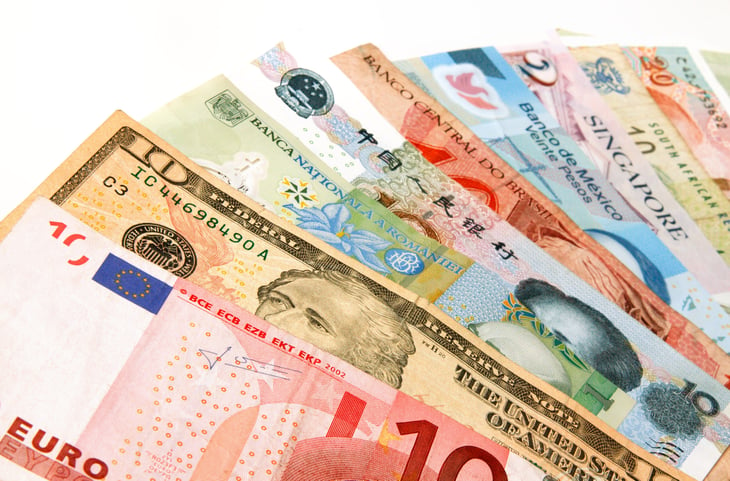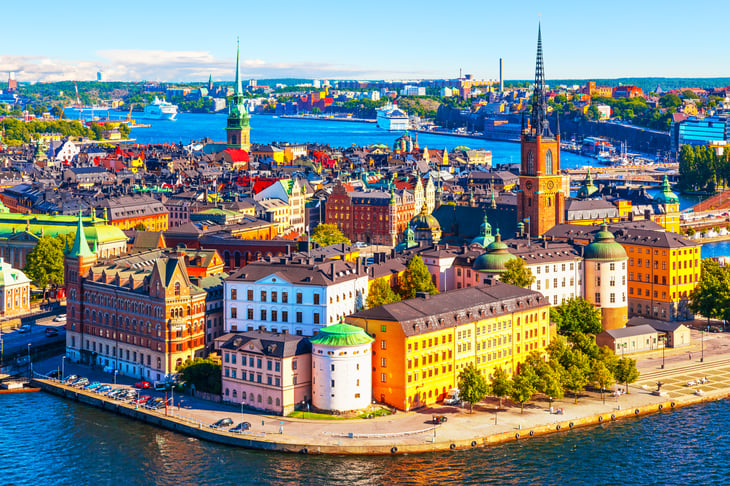
Countries have credit scores much like consumers do — and the score for the U.S. just took a hit.
Fitch Ratings just downgraded the U.S. credit rating from the highest rank, causing the stock market to sink. Fitch is one of the three major credit rating agencies along with Standard & Poor’s and Moody’s.
Whereas consumers have numerical credit scores, countries are rated with letter grades — ranging from AAA down to D, in the case of Fitch’s rating system. The U.S. is now rated AA+, the second-highest rating from Fitch.
The reasons Fitch cited for downgrading the U.S. include:
- “Erosion of governance” over the last 20 years, including “repeated debt-limit political standoffs and last-minute resolutions” to avoid default
- Lack of a medium-term budgeting framework
- Tax cuts and new spending, causing rising deficits and federal debt
- Little progress in addressing risks to Social Security and rising Medicare costs
- Likelihood of recession later this year
The change in rating could make it more expensive for the U.S. to borrow money and scare investors in the stock market, although some experts expect little to change.
Several countries now have the highest rating from all three major credit rating agencies. Following are those countries with higher credit ratings than the U.S., with the U.S. included for comparison. They are listed in order of their debt-to-GDP (gross domestic product) ratio, which is akin to a consumer’s debt-to-income ratio.
Singapore

This country’s gross debt as a percentage of gross domestic product (GDP): 134.5%
This country’s global credit ratings from Fitch, S&P and Moody’s: AAA, AAA and Aaa, respectively
Singapore is the only country on this list with a higher debt-to-GDP ratio than the U.S. However, the country is lending more than it is borrowing, and maintains a balanced budget. Its borrowing can be thought of more like a responsibly paid mortgage.
“Singapore is one of the few countries in the world with a net asset position, and our financial assets are well in excess of our liabilities,” Singapore’s Ministry of Finance says.
United States

This country’s gross debt as a percentage of gross domestic product (GDP): 122.2%
This country’s global credit ratings from Fitch, S&P and Moody’s: AA+ (second-highest), AA+ (second-highest) and Aaa (highest), respectively
The United States owes well over 100% of its gross domestic product, and doesn’t have the same excuses as Singapore. It began the 2023 fiscal year without any of the dozen spending bills usually part of its budget.
Since the modern budget process was introduced in 1976, there have been 20 such funding gaps, four of which led to government shutdowns of more than a single business day, according to the Committee for a Responsible Federal Budget:
- 1995-1996: Two shutdowns totaling 26 days
- 2013: One shutdown lasting 16 days
- 2018: One shutdown lasting 35 days
Germany

This country’s gross debt as a percentage of gross domestic product (GDP): 67.2%
This country’s global credit ratings from Fitch, S&P and Moody’s: AAA, AAA and Aaa, respectively
Germany is well-known for its historical fiscal austerity. It is also the largest economy in the European Union, and earlier this year entered a recession.
Australia

This country’s gross debt as a percentage of gross domestic product (GDP): 59.4%
This country’s global credit ratings from Fitch, S&P and Moody’s: AAA, AAA and Aaa, respectively
Australia improved its deficit by $111 billion in 2021-2022, but still operated at a net loss of almost $35 billion during that time, according to government data.
Netherlands

This country’s gross debt as a percentage of gross domestic product (GDP): 48.2%
This country’s global credit ratings from Fitch, S&P and Moody’s: AAA, AAA and Aaa, respectively
“The Dutch economy continues to expand, despite very high inflation,” the European Commission says. It is expected to have a deficit of 2.1% of GDP in 2023 and 1.7% in 2024.
The increase to the deficit comes partially from a price cap on electricity and gas, energy credits for lower-income households, a 10% increase in the minimum wage that affects social security benefits, and lower income taxes.
Norway

This country’s gross debt as a percentage of gross domestic product (GDP): 38.8%
This country’s global credit ratings from Fitch, S&P and Moody’s: AAA, AAA and Aaa, respectively
Norway “experienced one of the highest growth rates among advanced economies in 2022,” according to the International Monetary Fund. “The country has been in a unique position as the windfall gains from high petroleum and natural gas prices have so far countered global headwinds.”
The country is the third-largest exporter of natural gas in the world, and consumes almost none itself.
Switzerland

This country’s gross debt as a percentage of gross domestic product (GDP): 37.5%
This country’s global credit ratings from Fitch, S&P and Moody’s: AAA, AAA and Aaa, respectively
Switzerland’s debt brake, implemented at the turn of the millennium, ensures federal debt does not get out of hand by requiring a budget surplus in a booming economy to balance out deficits during downturns. It was designed to prevent a repeat of the soaring debt that happened in the 1990s.
Sweden

This country’s gross debt as a percentage of gross domestic product (GDP): 32.3%
This country’s global credit ratings from Fitch, S&P and Moody’s: AAA, AAA and Aaa, respectively
Like Switzerland, Sweden had a big debt problem in the 1990s and implemented reforms to turn things around permanently. It also now has a “debt anchor,” introduced in 2019 and designed to keep long-term debt at around 35% of GDP.
Denmark

This country’s gross debt as a percentage of gross domestic product (GDP): 30.4%
This country’s global credit ratings from Fitch, S&P and Moody’s: AAA, AAA and Aaa, respectively
Denmark, like the U.S., has a debt ceiling. Unlike in the U.S., it isn’t wielded as a political weapon that causes collateral damage (including a lower credit rating).
Experts say this is because the country is less polarized, its people largely in support of welfare programs, and it runs a budget surplus that has steadily brought debt down over the past decade.
Luxembourg

This country’s gross debt as a percentage of gross domestic product (GDP): 27.4%
This country’s global credit ratings from Fitch, S&P and Moody’s: AAA, AAA and Aaa, respectively
Tiny Luxembourg, with an area of about 1,000 square miles — smaller than Rhode Island, the smallest U.S. state — has the lowest debt-to-GDP ratio on this list. According to the U.S. State Department, the Grand Duchy of Luxembourg punches far above its weight. The nation:
- Is the second-wealthiest country in the world by GDP per capita
- Is the second-largest “investment fund asset domicile, after only the United States,” holding over $6 trillion of assets
- Consistently ranks “as one of the world’s most competitive and least-corrupt economies”





Add a Comment
Our Policy: We welcome relevant and respectful comments in order to foster healthy and informative discussions. All other comments may be removed. Comments with links are automatically held for moderation.